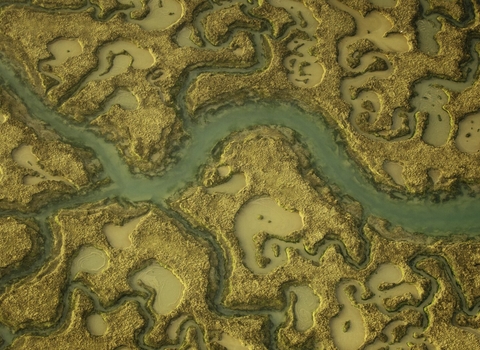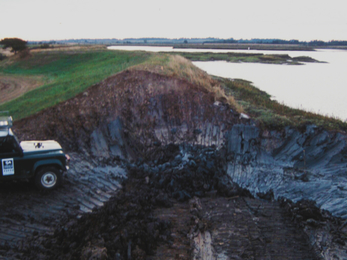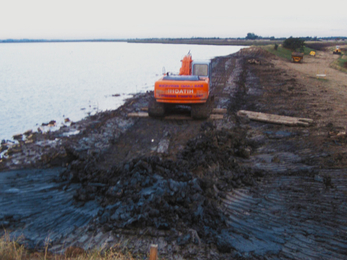Saltmarshes are coastal heroes - not only do they support huge biodiversity – from tiny critters within the mud, fish in the creeks, to birds on the shore - they also support and protect us. As one of our key allies in fighting the climate crisis, saltmarshes are a key focus of Essex Wildlife Trust's coastal and marine work.
Saltmarsh in decline
Saltmarsh epitomises the Essex coastline. However, in the UK, we are losing 100 hectares of saltmarsh per year. ‘Coastal squeeze’ is one problem. Saltmarsh squeezed between man-made sea walls and rising sea levels means saltmarsh habitat is lost. Such losses threaten coastal defence, water quality, fisheries and treasured landscapes, as well as valuable ecosystems and wildlife.
A solution: managed realignment
Managed realignment is one way of creating new saltmarsh and is achieved by purposefully removing coastal defences or moving them further inland.
In October 2002, the 3.5km sea wall at Abbotts Hall, along the Blackwater Estuary, was breached in five places to revert almost 50 hectares of previously arable land into saltmarsh and intertidal habitat, with a further 35 hectares of coastal grassland, including a lake being created.
The previously farmed land was rapidly transformed as saltmarsh plants quickly colonised the area and new coastal wildlife moved in. It is considered a good case study for managed realignments and as a key nature-based solution.
The Trust’s second managed realignment was carried out at a nearby nature reserve, Fingringhoe Wick, where medieval walls were breached to create 22 hectares of new, internationally important intertidal habitat on the Colne Estuary.
How do saltmarshes help wildlife?
Healthy saltmarsh is biodiverse and supports a complex ecosystem. Overwintering wildfowl like brent geese, and wading birds such as redshank and lapwing rely on saltmarshes. Saltwater channels and mudflats also offer a safe nursery area for young fish like European bass, herring and grey mullet, searching for their next meal among the muddy beds and vegetation.
How do saltmarshes help us?
We may not realise it, but saltmarshes help humans. Not only are they a natural flood defence, protecting our homes and land in case of storms and floods, they also boost carbon reduction. These carbon sinks can capture four tonnes of carbon per year, in just one hectare of saltmarsh. Just by existing, they are fighting against climate change for us.







